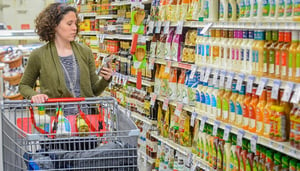World food prices rose to their highest in more than two years last month, driven by notable increases in prices of meat and vegetable oils, the United Nations’ Food and Agriculture Organization (FAO) said on Friday.
The FAO Food Price Index, a benchmark for world food commodity prices, averaged 130.1 points in July 2025, up 1.6 percent from June. July also marked the highest reading since February 2023, but the index remained 18.8 percent below its peak in March 2022, which followed Russia’s invasion of Ukraine.
Meat and vegetable oils drive price growth
The food price index tracks monthly changes in the international prices of a set of globally traded food commodities. In July, price increases in the meat and vegetable oil indices more than offset declines in the cereal, dairy and sugar indices.
The FAO Cereal Price Index averaged 106.5 points, down 0.8 percent from June. Declining wheat and sorghum prices outweighed increases in maize and barley. In addition, the FAO All Rice Price Index dropped 1.8 percent, driven by ample export supplies and weak import demand.
The report also revealed that the vegetable oil orice index averaged 166.8 points in July, marking a sharp rise of 7.1 percent from the previous month, reaching a three-year high.
Meanwhile, the FAO Meat Price Index averaged 127.3 points, up 1.2 percent from June, reaching a new all-time high. The increase was led by higher prices for bovine and ovine meat, supported by strong import demand, particularly from China and the United States.
Read: Bank of England cuts interest rate to 4 percent, stresses caution for inflation control
Sugar marks fifth consecutive month of decline
The dairy price index edged down by 0.1 percent from June to 155.3 points, marking the first decline since April 2024. Meanwhile, the FAO Sugar Price Index averaged 103.3 points, down 0.2 percent from the previous month, continuing its downward trend for a fifth consecutive month.
Early forecasts of a likely recovery in global sugar production in 2025-2026, resulting from expectations of larger outputs in India and Thailand, coupled with favourable weather conditions in key southern growing regions in Brazil, exerted downward pressure on world sugar prices in July. However, signs of a rebound in global sugar import demand limited the overall decline.








